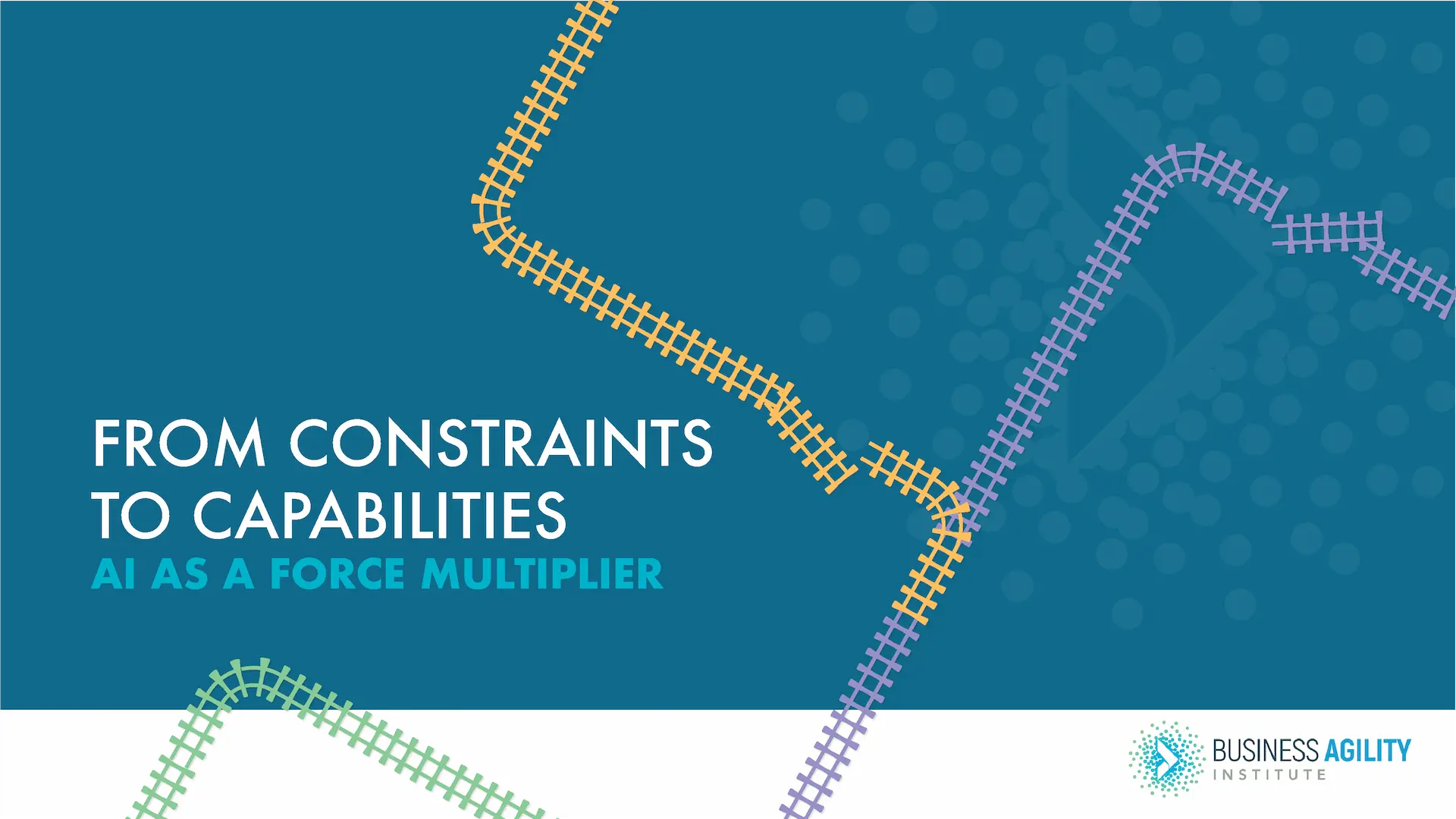AI Won’t Fix a Broken Business—But It Will Expose It
New Business Agility Institute Report: AI is a Leadership
and Tech Challenge
AI is often touted as a game-changer for business, promising faster decision-making, enhanced productivity, and breakthrough innovation. But here’s the catch: AI doesn’t operate in a vacuum.
According to new research from the Business Agility Institute, From Constraints to Capabilities: AI as a Force Multiplier, AI’s potential is often undermined by organizational constraints like slow decision-making, rigid budgeting cycles, and outdated workflows. Instead of solving business problems outright, AI ends up amplifying them—meaning that unprepared organizations may find themselves struggling rather than thriving.
AI as a Force Multiplier—For Better or Worse
The report highlights AI’s role as a “force multiplier,” capable of delivering business improvements ranging from modest gains (20%) to transformative leaps (320%). However, achieving these benefits isn’t just about adopting AI—it’s about creating the right conditions for AI to succeed. Organizations stuck in bureaucratic decision-making or siloed workflows often fail to capitalize on AI’s potential, while those embracing agility, dynamic funding, and a learning culture see much greater returns.
Leadership Matters More Than Ever
One of the report’s most critical findings? Leadership plays a significant role in unlocking AI’s benefits. The study points out seven capabilities that separate winners from under-performers:
- Cultivating a learning organization: Leaders who encourage continuous learning and adaptability ensure their teams evolve alongside AI.
- Prioritization: Without clear priorities, AI initiatives risk becoming distractions rather than strategic assets.
- Dynamic funding: Traditional budgeting processes slow down AI innovation—organizations need more flexible, real-time resource allocation.
- Creative workflow optimization: AI thrives in environments where workflows are designed for speed and integration, rather than constrained by silos and inefficiencies.
- Balancing governance and risk: Striking the right balance between AI oversight and innovation ensures AI is used ethically and effectively.
- Sensing and responding proactively: AI provides predictive insights, but leaders must be prepared to act on them quickly.
- Realizing people’s potential: AI isn’t here to replace employees—it’s here to enhance their capabilities. Organizations that invest in upskilling their workforce unlock the greatest value.
AI Alone Won’t Drive Business Outcomes—Leadership Will
The research makes one thing clear: AI’s success is a leadership challenge, not just a technology challenge. Organizations that treat AI as a plug-and-play solution will likely see disappointing results. But those that rethink leadership, structure, and decision-making can harness AI to drive unprecedented business impact.
So before investing in AI, let’s ask ourselves: Is your business designed to operate at the speed of AI? If not, AI won’t solve your problems—it will simply expose them.
Interested in learning more about the intersection of AI and leadership? Visit the ALJ AI Leadership Lab!







